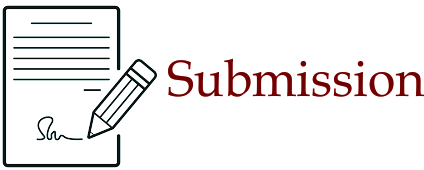Diskontinuitas Bahasa Komunikasi Media Elektronik Dosen dan Mahasiswa Fakultas Agama Islam Universitas Muhammadiyah Malang
Abstract
The issuance of regulations and appeals to the way of electronic media communication language in several universities are driven by lecturers' complaints about the number of communication from students via telephone, SMS, email, Whatsapp which is less ethical, in this case language plays an important role, the wording in non-communication Verbal through electronic media provides opportunities for considerable discontinuity in the meaning of sentences, because without visible intonation and expression, so it does not rule out the possibility of multi language interpretations of lecturers and students. This problem is said to be the generation difference is the reason for the creation of communication language discontinuity. This study aims to determine how the discontinuity and how the discontinuity forms of electronic media communication between lecturers and students. With descriptive qualitative research methods, the methods of data collection analysis, data condensation, display, and verification to find the results of the formulation of this research problem. The results observed are discontinuities in the language of communication between students and lecturers found in ways of communication that are not following the descriptive ethics intended by lecturers of the Faculty of Islamic Religion. The form of language discontinuity in student and lecturer communication is in the choice of diction.
Full Text:
28 - 37References
Aziz, Mursal. Jurnal Tarbiyah Vol. 25, No.1. Etika Akademis dalam Pendidikan Islam. Sekolah Tinggi Ilmu Tarbiyah (STIT) Al-Ittihadiyah Labuhanbatu Utara.
Dewi, Fajar Laksmita. 6 Ciri Generasi Millenial. https://www.idntimes.com/life/family/fajar-laksmita-dewi/7-sifat-millennial-yang-bikin-resah-orangtua/full, diakses April 2019
Hovland, Carl I. dalam Dick Lee. Developing Effective Communications. Outreach.missouri.edu/publications/DisplayPrinterFriendlyPub.aspx?P=CM109. Diakses April 2019
Huberman, MB. Miles, AM. and Jhonny Saldana. 2014. Qualitative Data Analysis: A Methode Sourcebook. Third Edition. Arizona State University: SAGE Publication. Inc.
J, Raco. 2003. Metode Penelitian Kualitatif: Jenis, Karakteristik, dan Keunggulannya. Jakarta: PT Grasindo,
Lasswll, Harold D. 1948. The Structure and Function of Communication in Society, The Communications of Ideas. New York: Institute for Religious and Social Studies, Jewish theological Seminary of America.
Martin, Carolyn A. and Bruce Tulgan. 2002. Managing the generational Mix. Amherst, MA: HRD Press
Moleong, Lexy J.2007. Metode Penelitian Kualitatif. Bandung: Remaja Rosdakarya
Mubarok, Ahchmad. 2014. Psikologi Dakwah (Membangun Cara Berpikir dan Merasa). Malang: Madani
N, Howe. & Strauss, W. 2000. Millennials Rising: The Next Generation. New York: Vintage Books
Pearson, Judy C & Paul Edward Nelson. 2000. An Intruction to Human Communication: Understanding and Sharing. London, United Kingdom: McGraw Hill Education
Putra, Yanuar Surya. Theoritical Review : Teori Perbedaan Generasi, Among Makarti Vol.9 No.18, (Desember 2016)
Schramm, Willbur. 1961. How Communication Works, The Process and Effects of Mass COmmunication. Urbana, III: The University of Illinois Press.
Sonny, Keraf. A. 1991. Etika Bisnis Membangun Citra Bisnis sebagai Profesi Luhur. Yogyakarta: Kasnisius
W, Suranto A. 2011. Komunikasi interpersonal. Yogyakarta: Graha Ilmu
Wenxiu, Peng. Analysis of New Media Communication Based on Lasswell’s “5W” Model. Journal of Educational and Social Research MCSER Publishing, Rome-Italy Vol. 5 No.3 September 2015.
Wiryanto, R. 2006. Pengantar Ilmu Komunikasi. Jakarta: PT Grasindo
DOI: https://doi.org/10.18860/jpai.v6i1.8468
Refbacks
- There are currently no refbacks.
Copyright (c) 2019 J-PAI: Jurnal Pendidikan Agama Islam

This work is licensed under a Creative Commons Attribution-ShareAlike 4.0 International License.
...............................................................................................................................................................
Editorial Office:
Fakultas Ilmu Tarbiyah dan Keguruan
Universitas Islam Negeri Maulana Malik Ibrahim Malang
Jalan Gajayana 50 Malang, Jawa Timur, Indonesia 65144
Phone (0341) 552398, Faximile (0341) 552398
E-mail: jpai@uin-malang.ac.id
J-PAI: Jurnal Pendidikan Agama Islam is licensed under a Creative Commons Attribution-ShareAlike 4.0.
...............................................................................................................................................................
Indexed by:



















